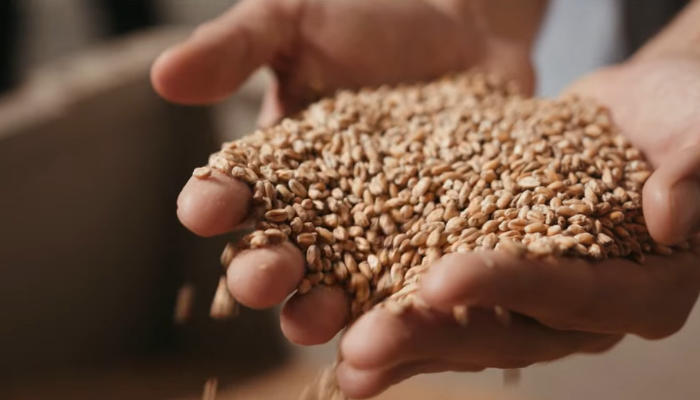01 November 2022
What food from beer waste would you like to go with your pint?

Kamaljit Moirangthem, Rossana Coda and Dilip Rai, Teagasc, tell us how the by-products of beer production like brewer’s spent grain could be used as a food ingredient or as new food products.
Our health is affected by the food we consume, the environment we live in and our genetic makeup. We have more control over the food we choose to eat than the others and we are what we eat. This choice of food also plays a crucial role in the health of our planet. What kind of planetary inheritance will we leave for our future generations?
There is an increasing awareness of the demand for tasty sustainable healthy diets that consumers can enjoy with clear conscience. Various policies, such as the EU’s Farm to Fork Strategy, supports the United Nations’ call to action to feed an exponentially growing population. However, this needs to be done within the constraints of our planet’s boundaries and rapidly deteriorating global climatic conditions, while also creating circular market opportunities.
One example is re-introducing the by-products of beer production to the food system for use as a functional food ingredient or as novel food products. Brewing is one of the largest global food and drink industries, which produces an incredibly popular beverage in the shaope of beer. However, beer production also generates a large amount of unavoidable solid waste as residual malt known as brewer’s spent grain. This consists of cereal husks, residual starch and other cereal adjuncts, such as wheat and rice.
Around 39 million tonnes of this spent grain is produced globally and this accounts for roughly 85% of by-products within the brewing process in both alcoholic and non-alcoholic beer production alike. It is generally used as low-value cattle feed, fertiliser or destined for landfill, the latter costing the processors for disposal. However, brewer’s spent grain is also rich in fibre, protein, vitamins, minerals, essential amino acids and bioactive polyphenols with antioxidant, anti-inflammatory, anti-atherogenic, anti-cancer, and anti-neurodegenerative effects
Re-introducing brewer’s spent grain to food comes with technological challenges. To begin with, it is a tough material with a coarse texture. Being a wet residue with residual fermentable sugar, it can deteriorate quickly and encourage the growth of unwanted microbes. Brewer’s spent grain also imparts an unpleasant flavour.
Bioprocessing with the aid of physical treatments resulted in some promising findings, especially in the baked foods category. For example, via sourdough fermentation and application of the enzyme xylanase, brewer’s spent grain can be used as an ingredient for high fibre bread. It has been used to develop fortified semolina pasta which even meets the requirements of European Community Regulation No. 1924/2006 and can be labelled as “high fibre” and “source of protein”. In addition, bioprocessing has been shown to further improve properties such as its antioxidant potential and textural properties by biosynthesis of polysaccharides such as dextran.
We are now exploring the application of microbial bioprocessing of brewer’s spent grain following physical and enzymatic treatments to develop plant-based fermented beverages with a spoonable consistency. We are working with spent grain from both craft and commercial breweries. Since it’s a tough material, we needed to first break down its structure. This was achieved via physical processes such as milling and with the application of a range of enzymes that target specific components of the grain.
Doing this will make the brewer’s spent grain more favourable for selected microbes to ferment and produce products of desirable sensory profiles. We are also introducing advanced physical processing and preservation techniques such as pulsed electric fields that have been shown to improve the antimicrobial activity of the grain and also explore the prototypes’ ability to promote good health in the body.
Producing food from this vast untapped global industry resource could improve food security, even for the lowest-income countries, while also creating circular market opportunities to be sustainable. It could also meet the demands of plant-based diets that go beyond normal nutrition, while reducing the carbon footprint of one of the largest food industries and thereby help to mitigate climate change.
Kamaljit Moirangthem is a Marie Skłodowska-Curie Fellow at the University of Helsinki. He is funded by the Research Leaders 2025 Fellowship programme (co-funded by Teagasc and the European Union’s Horizon 2020 Research and Innovation Programme) under the Marie Skłodowska-Curie grant agreement number 754380.
Rossana Coda is an adjunct Professor and University Researcher at the Department of Food and Nutrition at the University of Helsinki.
Dilip Rai is a Senior Research Officer at the Food Biosciences Department at Teagasc.
This article was first published in RTÉ Brainstorm
